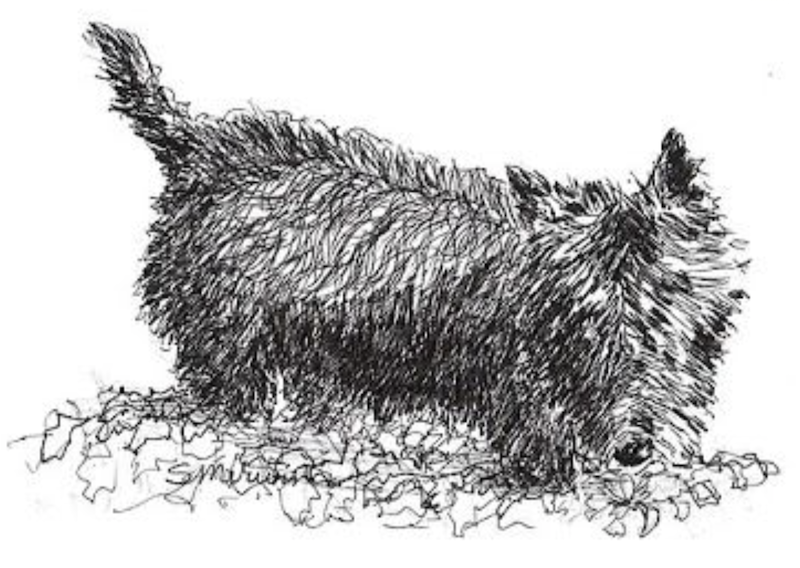
There is Scotch tape, Scotch eggs, the Scotch pine tree, Scotch moss, Scotch Guard Spray, and of course, Scotch Whisky.
But did you know that until the last part of the 19th century, all terriers in Scotland were historically called “Scotch Terriers?” This changed (marginally) when dog shows became “a thing,” and then the terriers of Scotland were called “Scottish Terriers.” But which terrier was the Scottish Terrier? The Skye Terrier, West Highland White Terrier, the Cairn Terrier, Dandie Dinmont Terrier, or even the Yorkshire Terrier?
And why would dog shows have impacted a name change?
The last question is answered by pointing out that the change had more to do with the maturation of breeders of the day. They wanted a more substantial way to differentiate between various types of terriers from Scotland, and that meant getting it in writing, so to speak. And when it comes to noting aspects of a breed in an official way (those qualities that make a breed different from any other breed), it means recording them in a breed standard, a detailed written description of the ideal characteristics, temperament, and appearance of that breed.
Sources are in agreement that the first significant steps toward standardizing a terrier from Scotland occurred around 1880, and that the first terrier breed to have a written standard was the Scottish Terrier. Mind you, the first known mention of the Scottie had happened long before. Bishop John Lesley in his book History of Scotland from 1436 to 1561 described it as a “dog of low height, which creeping into subterraneous burrows, routs out foxes, badgers, martins, and wild cats from their lurking places and dens.”
Fast forward to the 1800s when most terrier folk in Scotland were referring to their dogs as “Scotch Terriers,” and it was inevitable that a row would ensue – a very public dispute when breeders voiced their complaints in the Live Stock Journal, along with opinions on what the standard should be. Exasperated at the fevered pace with which letters to the editor were coming in, the Journal had little choice but to end it which it did with the following statement: “We see no use in prolonging this discussion unless each correspondent described the dog which he holds to be the true type.”
Never challenge a terrier, nor his or her owner. Just saying.
One Captain Gordon Murray took up the challenge and wrote a description of an ideal Scottish Terrier, the breed we know today by the same name.
This worked until another pair of fanciers, J.B. Morrison and Mr. Thompson Gray, drew up another standard in 1880 which was published in Vero Shaw’s Illustrated Book of The Dog, and this gave their version of the standard “gravitas.” Some sources add the name of Captain W.W. Mackie in the creation of the standard, but as far as we can tell, Mackie, a prominent breeder and exhibitor of Scotties, helped popularize the breed and maintain its standard, but he did not participate in the writing of it.
The drafting and publication of Morrison and Gray’s first official standard for the Scottish Terrier helped to define the breed’s characteristics and spelled out how different it was from other terriers. Two years later, Scottish Terrier Clubs were formed in both Scotland and England. J. H. Ludlow, who had founded the Scottish Terrier Club of England, bred or owned many of the breed’s earliest champions including a bitch named, “Splinter II.” Because most present-day Scotties trace back to her, Splinter has been called the “foundation matron of the modern Scottish Terrier,” but she is a topic for another time.
Image: “Scottish Terrier Pen and Ink by Sandra Merwin
http://sandramerwin.com
http://horsedancerart.blogspot.com
